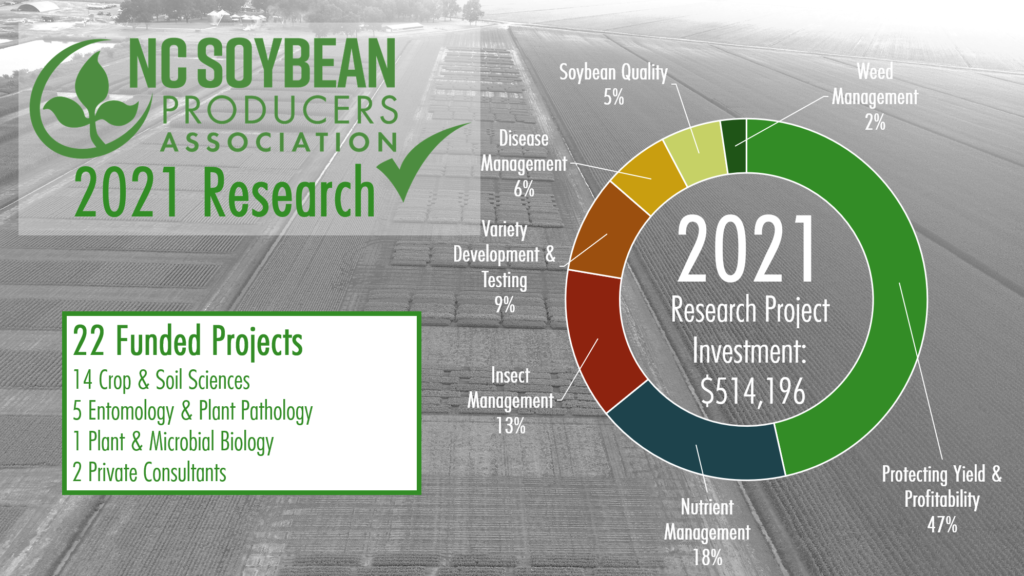The North Carolina Soybean Producers Association is focused on providing continued investments in applied soybean production research as well as teaching and training the next generation of the agriculture workforce. We are committed to funding projects across a wide range of topics that will address challenges and explore opportunities for our North Carolina soybean farmers today and in the future. Our goal is to make sure you have the information you need to make production decisions for your operation.
The board may approve project awards to qualified research contractors based on an annual Request for Proposals and submission of project funding proposals with a complete budget and scope of work. Checkoff-funded research awards are approved annually by the board of directors. The awards are managed to achieve the best outcomes and technology sharing for North Carolina soybean farmers. The awards are approved contingent on strict reporting & financial accounting requirements.
The North Carolina Soybean Producers Association is also a supporter of the National Soybean Research & Information Network which has a website that features soybean research happening across the United States as well as a database of all checkoff-funded soybean projects.
A list of projects the NCSPA is funding in 2021 is listed below. A summary of research project results is published each year in the NCSPA’s Research Report, the latest version of which can be found here.


